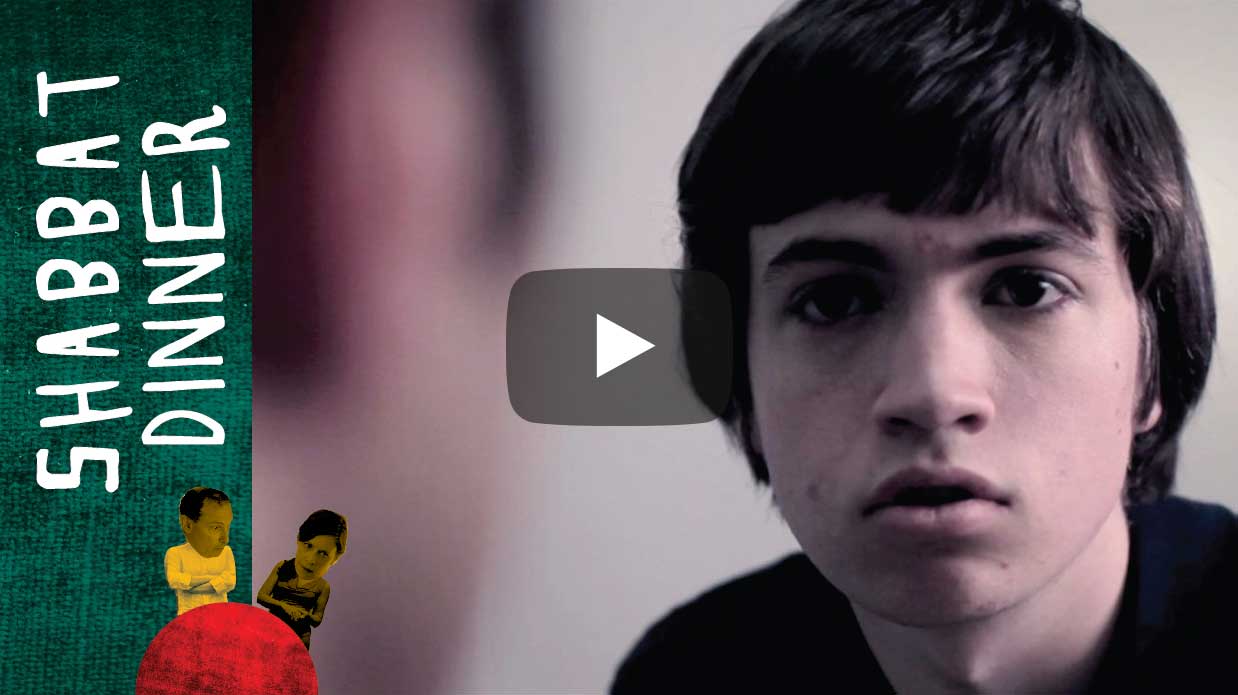Making Shabbat Dinner Part 1: Preproduction in 2 months

A four-part series on just what went into making a short film. You can also read part 2, production, part 3, finishing the film, and part 4, distribution.
I’d never seen the point of making a short film; or rather, I saw the point and still hadn’t wanted to. For most directors, a short film is like a calling card: scrambled to be made in a tiny budget (or just as often, with an inappropriately large one) for the sole purpose of showing that yes, this filmmaker can direct a film. Film Marketing 101 (it’s a confusing course) dictates that the film be connected to a feature project the creators want to make.
Now, I recognize that this is the way the world works, but that doesn’t mean I like it. Contrary as I am, I really had a difficult time wrapping my head around the idea of finding a story, getting together a cast and crew, shooting and editing it, all for the purpose of *showing that we are capable of executing our various roles.* Which is why, when I made a short film, I wanted it to mean something…even just something small.
Shabbat Dinner came into being when I decided to apply to film school. Several of the schools I was applying to required narrative samples of my work, and when I looked through what I had done I could find nothing that I wanted to show. I decided to find a few actors, grab a camera, and write a few-page script around whatever people and location I could find.
Then I thought about making a scene from a TV pilot I was working on about gay 14-16-year-olds living in Los Angeles in the 1990s. I thought I could write something that would stand on its own as an advocacy piece and a slice of life, and eventually find a home on the public internet as something for kids to connect to: two kids, in different stages of coming out, dealing with the expectations of their parents.
Aidan and I had been talking about making a film together for a while; he is a writer and we had considered a writing/directing collaboration, but he also mentioned that he would be interested in producing. We met in mid-September and decided to make the film together. This was the push I needed – a deadline (December 1) and a collaborator. I wrote the first draft of the script in three hours.
Script
Ha! No I didn’t… The actual writing, in front of a computer, of the three-page script took three hours. The thought before it took forever. Usually I will spent 5-15 days staring at a wall, hitting it with my head, or punching it with a fist (open palm sometimes too.) It took about five days in this case. I solicited input from a wide variety of people – Aidan, my roommates, and several mentors in the industry, and went through ten drafts before it was ready to go.
Location and Cast
Our to-do list at this point could be broken into two categories: things that we might not have gotten and absolutely needed if we weren’t going to change the script, and to-do items that we knew could get done. The former consisted of a perfect location, six actors who could play the roles well, and the money to make it (although that last one was a bit more fluid – less money would not have killed the project, just made it of lower quality.)
I asked just about everyone I knew who had an apartment, and discovered that my friend Pete (who happens to be a lawyer) lives in a beautiful two-bedroom apartment on the Upper West Side. In fact, I had been to an apartment in that same building and was imagining that apartment when I wrote the script!
Finding actors proved to be a bigger challenge. I wanted kids who were as young as possible; even though the story would work with 22-year-olds, I felt that the more innocent the kids seemed, the more powerful the story would be. Aidan set up an open casting call and sent feelers to tons of friends, but nothing felt perfect. I finally found Chris London through an old friend who works as a drama teacher. When he read the script, though, he panicked – I had told my friend that it was about gay youth, but not that it included a kissing scene and the suggestion of much more. Very upset, she sent me an email with a stern discussion of casting ethics and Chris nearly backed out. We were terrified that it wouldn’t work out. I told Chris to come to the audition and talk to us, and he agreed and then decided to do it. We laughed recently at the thought that he almost didn’t.
I met Dan Shaked through a friend in a writers’ group that I was in. I had spoken to about five people that day, some of whom weren’t very good and some who just looked wrong for the part. Dan looked the part, felt very passionate about the film, and delivered the lines really well, so he was in.
Finding good 40-ish-year-old actors to work on a small project is difficult; they either are successful in the field or have left it altogether. We were lucky to find Peter Tedeschi (who was coming back from a break in acting) and Michael Wikes (who had left the theater for 20 years to do advertising.)
Figuring that we might find older talented actors looking to do a small film in the theater community, I asked my friend Matt Sigl, who works in casting, to name 15 theater actors who would fit in each role. He did, and I spent a week hounding their agents and searching for them on Facebook. I finally got ahold of one actor who later changed his mind about being in the film, but recommended the fabulous Eva Kaminsky, who was in Chicago with God of Carnage at the time. When I skyped with Eva from Whole Foods and she started a line reading, her entire face morphed into a perfect mask of Rebecca. I knew she had to be in the film, and we scheduled it around her return to make that work.
Kickstarter
The next challenge was getting the funding for the film. We decided to do a Kickstarter campaign, which had the added benefit of geting our friends and family involved early on in the process. We recorded a video of me describing the film and why I wanted to make it, edited it together, and put it up on the Kickstarter page. We were offering rewards like DVDs of the film, admission to the release party, swag from the film, and a film credit. I made a Facebook page for the film and began spreading the word – through email, Facebook, chat, and in-person conversations.
The response bowled me over. It was above what we had hoped for, and was truly amazing to see friends indicating support for us, not with their words, but with their money. Every email we got about a new donor warmed my heart. I didn’t want to overwhelm people with emails, but I also got the feedback from many friends that they intended to give but needed another push. My friend Anna, who runs a nonprofit, told me that I had probably only gotten about half of what people wanted to give, and I would need to send reminders. We decided on three e-mails: one at the start of the campaign, one at the midway point with an announcement of our actors, and one a few days before the end of the campaign.
Through the campaign, we raised over $3,843, which was 50% above our goal of $2,530!
